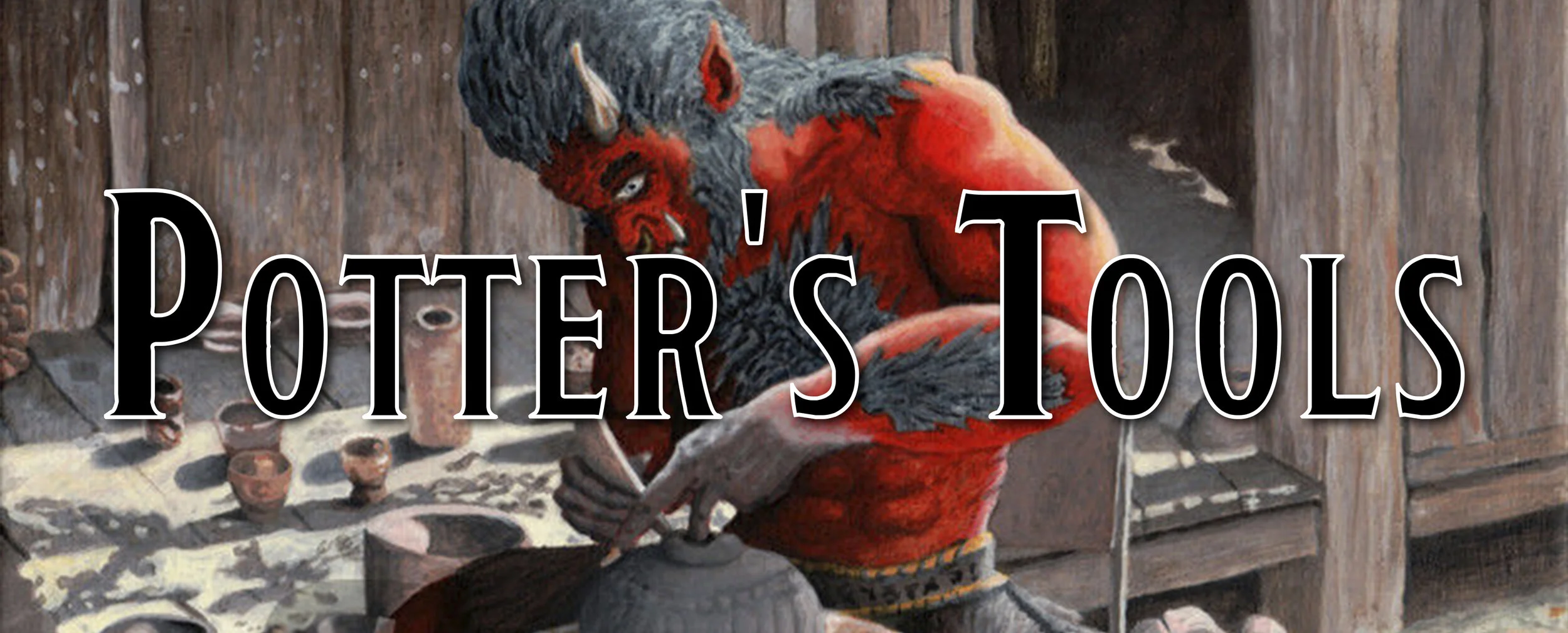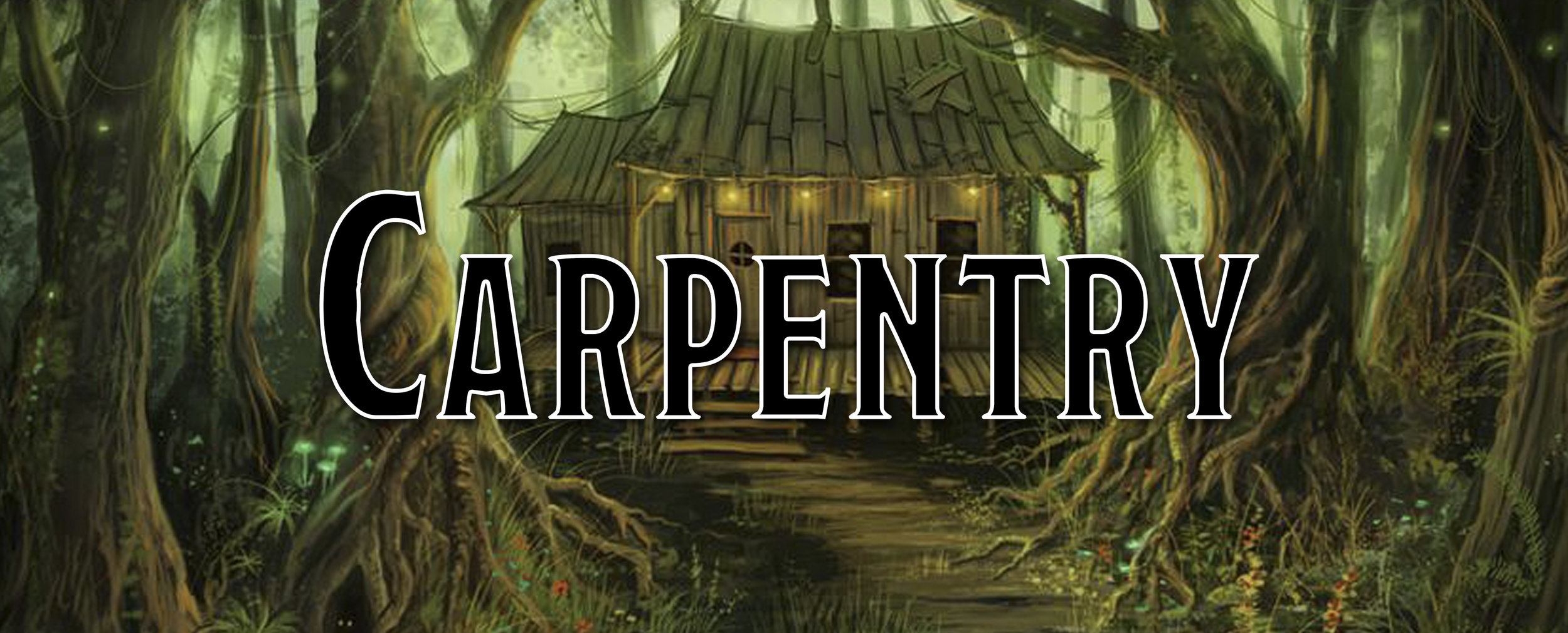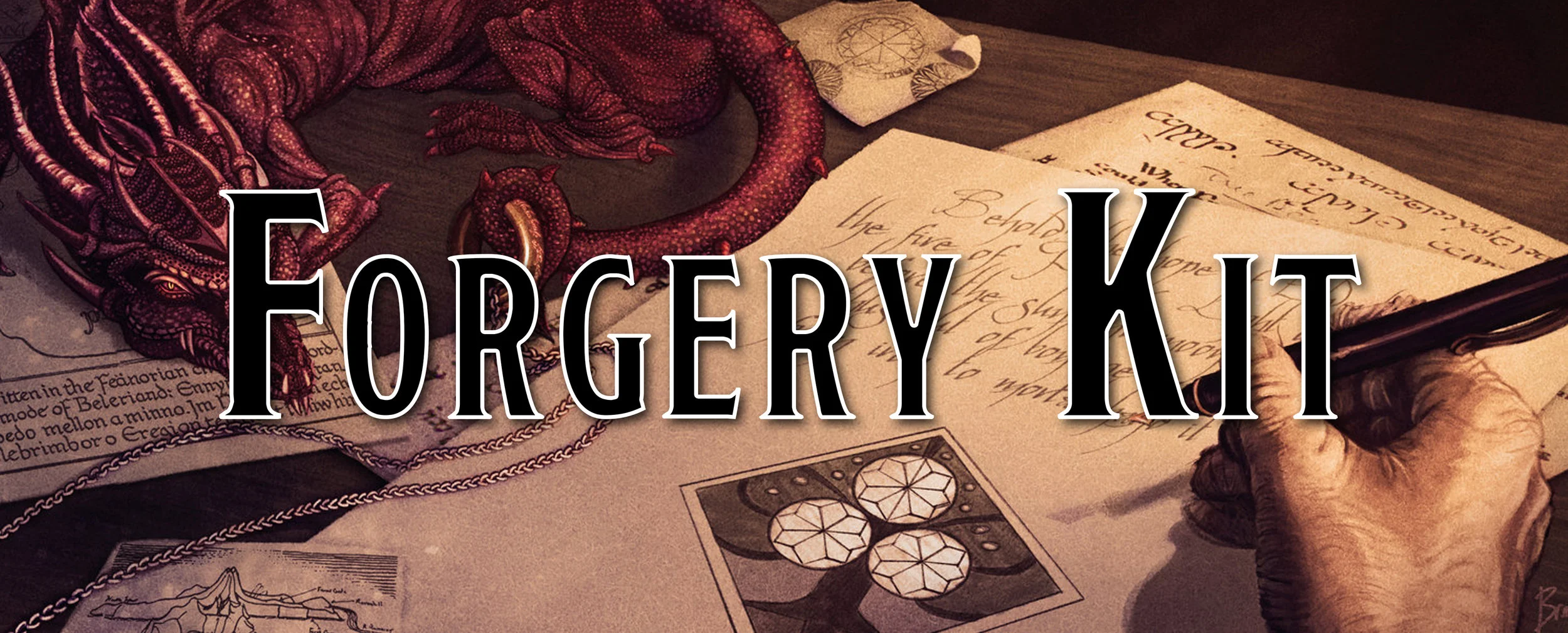Making Tools Useful in 5e: Climber's Kit
This is the first of a few tools that are a bit weird. They appear in the Player’s Handbook, though they weren’t included in the list of the tools in the back of Xanathar’s Guide to Everything, and aren’t tools you can have proficiency with… but that by no means you can’t show this kit a bit of love! A Climber’s Kit is something that, at least in my games, is completely underutilized and lies forgotten in a corner collecting dust, which means it is ripe to be used in an upcoming session.
Climber’s Kit
Well, how we normally do things around here is that I link to Xanathar’s Guide to Everything and complain about how the information they provide isn’t all that useful in making a tool… useful. So I’ve decided to make my own for the Climber’s Kit! It deserves just as much love as other tools… even if it isn’t a real tool.
Climber’s Kit
The use of a Climber’s Kit allows a creature to easily scale cliffs, castle walls, and more, as well as helping you not fall to your death if you do slip.
Components. A climber's kit includes 10 special pitons, boot tips, gloves, 50 feet of hempen rope, and a harness.
Athletics. You are muscley and strong, pulling yourself up the mountain cliff like a monkey.
Arcana. Knowing how to use a Climber’s Kit means you know a magical rock when you see one, and that’s a magical rock.
History. You know the history of climbing, from the horrible mountains that have devoured countless adventurers that actually turned out to be a tarrasque, to knowing the best place to go spelunking in that one cavern infested with kobolds.
Investigation. As you are climbing, you can tell what handholds are likely real and what are definitely illusions… you just aren’t planning on telling the rest of your party that.
Medicine. Everyone knows that going outside and getting fresh air is good for you. You like to tell this to people constantly.
Nature. You can tell a mountain is by the way it is. Neat.
Survival. You know how to survive climbing them castle walls, mountain walls or just about anything so long as you add wall after it. You got this, you’re a survivor!
For once, I am blown away by how helpful this section of Xanathar’s, I mean Stephen’s Guide to Everything is. A++ for effort!
For those that don’t care about the how of my tool:
For best results in GM Binder, use a Chrome Browser
Providing More Uses
The goal in this tool isn’t really about creating a proficiency for it, though that might be something I create in the not-so-distant future once I get the rest of the tools finished. Instead, we are focused on creating even more uses for this tool and how you can include it in your own games.
First up, movement. While attempting to climb, it takes twice as much movement as usual. There are no changes here from how the rules work in the Player’s Handbook, and those with the Thief ability, Second-Story Work, or have the feat Athlete can rejoice, for it doesn’t take them extra movement to climb. Of course, if you have a climb speed, you also don’t suffer the extra movement rule, but this is for those of us mortals who don’t have claws or wings to help them.
Next up, we go over the uses of rope, which, interestingly… the Player’s Handbook does little with. Just specifies it has a wee bit of Hit Points and it can ripped apart on a DC 17 Strength check, it has nothing to do with climbing. In previous editions of the game, rope had a bit more use in making climbing easier, whereas now it is just there. In fact, climbing in this edition doesn’t actually require a check or anything, though the book does state that especially slippery surfaces might require a check per the DM’s discretion. In 5e, you can just climb and make it to the top of whatever you are climbing, no problem.
I’m a bit against that, climbing is hard and dangerous work, though some editions in the past went a bit overboard with how often you should roll for checks. For my own homebrew, we are going with for every 100 feet you climb, there is a check. This keeps the number of checks to a minimum as well as creates a type of skill challenge when it comes to climbing huge cliffs of doom. You could always adjust how often you call for checks to match your table’s enjoyment.
Falling
Falling is dangerous, though maybe not so much for a monk who can ignore a lot of fall damage, but for us mortals… Falling completely sucks. What this means is that falling shouldn’t happen just because you failed a check a little bit. If the DC to climb something is 10 and you rolled an 8, you aren’t going to plummet to your death, instead you just make no progress. Finding yourself go up the wrong set of handholds and realizing that one of the rocks you thought was close, is actually pretty far and you can’t make that very easy, that doesn’t mean you fall to your death, just that you made no progress. Then again, if you fail the check by 5 or more, well, that means you fall to the ground, no matter how far away that is. If your DM is especially vindictive, you’ll hit a few rocks and branches on the way down.
This is to say unless you have some anchors to hold you in! Falling isn’t death if you have some anchors that are willing to hold you in and keep you from falling to your death. This is why I introduced a variant rule that you can choose to add to your own tables. If you fall and an anchor catches you, roll a d20. On a 1, that anchor fails, and you plummet to the ground, or your next anchor. If you fall to the next anchor, it has a cumulative +1 chance of failing as well, meaning if you roll a 1 or 2, that anchor breaks, and you fall to the next one. That one then breaks on a 1, 2, or 3, and so on until an anchor finally catches you or you slam in the ground. However, anchor fail points cap out at 19, so a 20 will always save you no matter what.
This isn’t really based on anything except those action/adventure movies of the 90s where the hero is climbing up, slips, and begins falling down a mountain in a dramatic fashion, each anchor they placed into the wrong popping out and creating so much tension in the story that you cheer when the last anchor finally breaks their fall, and they don’t die. Of course, the chances of this happening are pretty low, but it might come up in your own games, and now you can throw in a bit of tension!
Climbing Terrain
Climbing normal terrain is waved, and there is no check, like in the Player’s Handbook. But what about dangerous terrain? Sometimes, you have to climb up a waterfall, a wizard tower, or a gargantuan construct trying to stomp its way across town. Then again, sometimes, for dramatic effect, a violent storm rolls in and threatens to break you off the rocks.
I provide a few examples of how you can introduce climbing into your own game, the wizard can then laugh maniacally as they launch themselves up into the sky, leaving the rest of the party to stand around and stare up a massive cliff in front of them.
These examples are from the mundane, like a rocky cliff to a waterfall, to adding in storms to gear up the tension. There are also examples of magical terrain, like an illusionary castle wall or constructs made of impregnable material. Check it out, and think about how you could introduce a bit of climbing into your own campaigns. Sometimes, mundane obstacles can be very effective in getting your party working together, talking about sharing equipment, and realizing that the wizard just cheats at everything in life.
Finishing the Climb
That is the Climber’s Kit. It’s not glamorous, it’s not technically a tool, but I wanted to do it because I want to be better at adding in special events that the party doesn’t typically encounter. Having a wall to climb every session could be annoying and tedious, but throwing in a wall as an obstacle a few times in a campaign can get people thinking creatively and at high levels they have so many ways of bypassing things of that nature that they can feel special and powerful when something that was challenging, is now just laughed about and easily overcome.
If you want a printer-friendly PDF of this tool or any other tool, consider supporting us at the $1 tier on our Patreon! All tools that I’ve created or will create in the future will be uploaded to our Patreon in printer-friendly versions. We appreciate any and all support!
Like what we are doing here?
Support us on Patreon!
You’ll get early access to deep dives, our Homebrew Hoard, ad-free articles, and more!

































